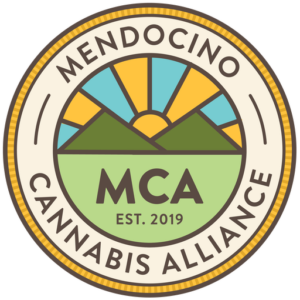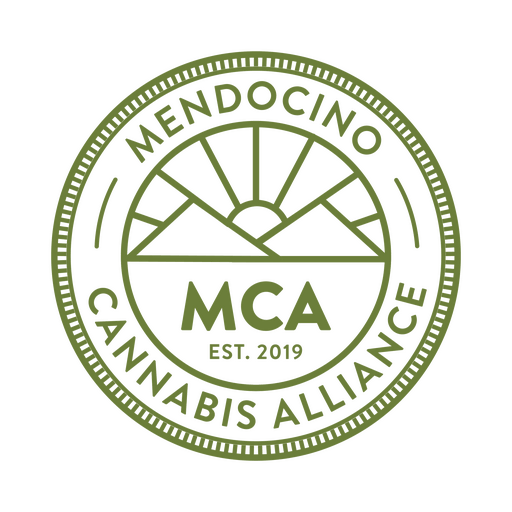Fire Resources
Mendocino County Fire Resources
Evacuation Information
Mendocino County Sheriff’s Office: 1-707-463-4086 (24/7)
CalFire August Complex West Zone: 707-355-4926
CalFire August Complex South Zone : 530-487-4602 (7 days, 7am-7pm)
Covelo Evacuee Shelters:
- Covelo High School for people (76280 High School Street)
- Covelo Rodeo Grounds for small/large animals and livestock on South Airport Road
- Those needing assistance with their animals specific to Covelo can call 707-272-2299 and ask for Sarah.
Emergency Ag Access for Evacutated Farmers
CDFA regulation 8207(h) allows cannabis to be moved without prior approval to prevent loss, theft, or degradation of cannabis due to a disaster. The rules for this are:
- The cannabis must be moved to a secure location where access to the cannabis is restricted to the licensee, its employees, and contractors.
- The licensee should notify CDFA in writing within 24 hours that they are requesting relief from complying with specific licensing requirements.
- Within ten days, the licensee should notify CDFA in writing a request for temporary relief that clearly indicates the statutory and regulatory sections from which relief is requested, the time period for which the relief is requested, and the reasons relief is needed for the specified amount of time.
- The licensee must provide inspection access to CDFA.
CDFA Disaster Relief Regulations
- The evacuation area has been determined to meet minimum safety standards based on anticipated fire behavior. Issuance of a pass is not a guarantee that conditions in the evacuation area are or will remain free of fire danger.
- Day passes will be issued by the MCSO at the checkpoint into the evacuation area.
- Anyone seeking a pass must sign a release of liability in acknowledgement of risk, available at the checkpoint.
- You MUST have valid identification that will be checked at the checkpoint.
- Passes are issued between 8AM and 10AM and are only valid until 7PM that same day.
- Only one vehicle per property will be allowed per day.
- A telephone number will need to be provided during the entry pass request process.
- You are NOT allowed to tend to any property other than the one specified on the pass.
CDFA’s Disaster-Relief Measures for Licensed Commercial Cannabis Farmers: What You Need to Know
September 24, 2020 — The year 2020 has brought us more than 8,000 fires that have burned millions of acres across the state, and we’re still in the thick of fire season. More than 18,000 firefighters continue to work 24 hours a day, 7 days a week, battling fires throughout California, and many of these fires are wreaking havoc among our community of licensed commercial cannabis farmers.
In recent years, the state’s most devastating wildfires have struck in September and October, and with warm and dry weather conditions persisting across the state, we want to ensure our licensees are aware of the resources available to them in the event they face a fire-related emergency. We have compiled a list of the most frequently asked wildfire questions we’ve received this year, and our responses are shared below for your reference.
If you have additional questions or concerns not addressed below, please contact us directly by sending an email to calcannabis@cdfa.ca.gov or calling us at 1-833-CALGROW (1-833-225-4769). We are here to help you navigate through these extenuating circumstances.
Q: I need to file a disaster-relief request. How should I do that?
A: We encourage cannabis cultivation licensees to provide the following information to us as soon as possible by sending an email to calcannabis@cdfa.ca.gov with “Disaster-Relief Request” in the subject line; if you’re unable to access your email account, please call us at 1-833-CALGROW (1-833-225-4769):
- Business name(s)
- License number(s)
- Name of the Designated Responsible Party (DRP) and the DRP’s contact information
- An explanation as to why you’re requesting disaster relief and a list of the specific regulations you need relief from; please include photographs, if available
- How long you need the disaster-relief for
- If relief includes moving cannabis plants or products off the licensed premises, please see steps 1 through 4 in the following Q&A
Q: Due to the immediate threat of fire, we had to relocate our harvested cannabis crops to safer ground. What should we do next?
A: If you moved your cannabis and/or nonmanufactured cannabis products to another location to prevent loss, theft, or degradation due to a disaster, that is allowable without prior approval from CDFA if the following steps are taken:
- The cannabis and/or nonmanufactured cannabis products were moved to a secure location where access is restricted to the licensee and the licensee’s employees and contractors.
- Within 24 hours of moving the cannabis, the licensee notifies CDFA in writing that the cannabis has been moved and requests relief from complying with specific licensing requirements; this notice may be sent by email to calcannabis@cdfa.ca.gov.
- Upon request, the licensee allows CDFA staff to access and inspect the location where the cannabis has been moved.
- Within 10 days of moving the cannabis, the licensee notifies CDFA in writing how long and why the temporary relief will be needed and specifies which licensing requirements relief is needed for; this more in-depth explanatory notice should include all the information requested in the Q&A above (see the bulleted list) and may be sent by email to calcannabis@cdfa.ca.gov with “Disaster-Relief Request” in the subject line.
For more information, please review the California Code of Regulations (CCR) on cannabis cultivation, section 8207.
Q: What information should be provided to CDFA in our 24-hour notice?
A: Provide your licensed business name(s), license number(s), the name of the Designated Responsible Party (DRP) and the DRP’s contact information, and, if applicable, the location of the cannabis and/or cannabis products that have been moved. Additional information may be needed depending on each farmer’s situation. As outlined above, after the 24-hour notice has been submitted, a more detailed disaster-relief request must be submitted to CDFA within 10 days.
Q: How does CDFA define a disaster?
A: In accordance with our cannabis regulations, a disaster is a condition of extreme peril to the safety of people and property within the state or a county, city and county, or city caused by conditions, such as a fire or air pollution, that the Governor has proclaimed a state of emergency, or a local governing body has proclaimed a local emergency in accordance with Government Code. For more details, please read section 8207(f) of the CCR on cannabis cultivation.
Q: My cannabis cultivation license expires soon. May I get an extension for paying the renewal fee?
A: You will need to send us your disaster-relief request and explain how your finances have been impacted as a result of the emergency. These requests will be considered on a case-by-case basis.
Q: May I get an extension on the requirements for complying with the California Cannabis Track-and-Trace (CCTT)/Metrc system?
A: You will need to send us your disaster-relief request and specify the CCTT/Metrc regulatory requirements from which you are seeking relief. These requests are being considered on a case-by-case basis. If the request is approved, CDFA cannabis compliance-and-enforcement staff may contact you to assist with the development of a compliance plan.
Q: I have a microbusiness license that includes cultivation. Am I also eligible for disaster-relief consideration from CDFA?
A: In this situation, your disaster-relief request would be reviewed by both the Bureau of Cannabis Control, which issues cannabis microbusiness licenses, and CDFA. We are evaluating these requests on a case-by-case basis.
Q: Can CDFA assist me with disaster relief if I have a non-cultivation cannabis license?
A: No. If you have a cannabis license for a retail outlet, distribution, or a testing lab, please contact the Bureau of Cannabis Control at bcc.ca.gov. Similar disaster relief provisions are also available under the BCC (Section 5038 of regulations) and DPH (Section 40182 of regulations). If you have a cannabis license for manufactured cannabis, contact the California Department of Public Health’s Manufactured Cannabis Licensing Branch at cdph.ca.gov.
- Oxalis has put together a template notification for regulators and other resources for requesting disaster relief.
CDFW Emergency Provisions
Cutting Emergency Fire Lines around Property Lines, Gardens and Structures of Licensed Cannabis Farms:
Fish and Game Code section 1610(a) exempts “immediate emergency work to protect life or property” from the notification requirement (in section 1602.) You can complete the work without first notifying, provided you inform DFW of the work within 14 days of completing it.
Form for Notification: LSA Emergency Notification Package_FINAL_52019
Work qualifying as emergency work: “emergency” is defined in FGC section 1601(c) to mean “emergency” as defined in CEQA: “[A] sudden, unexpected occurrence, involving a clear and imminent danger, demanding immediate action to prevent or mitigate loss of, or damage to, life, health, property, or essential public services. ‘Emergency’ includes such occurrences as fire, flood, earthquake, or other soil or geologic movements, as well as such occurrences as riot, accident, or sabotage.”

